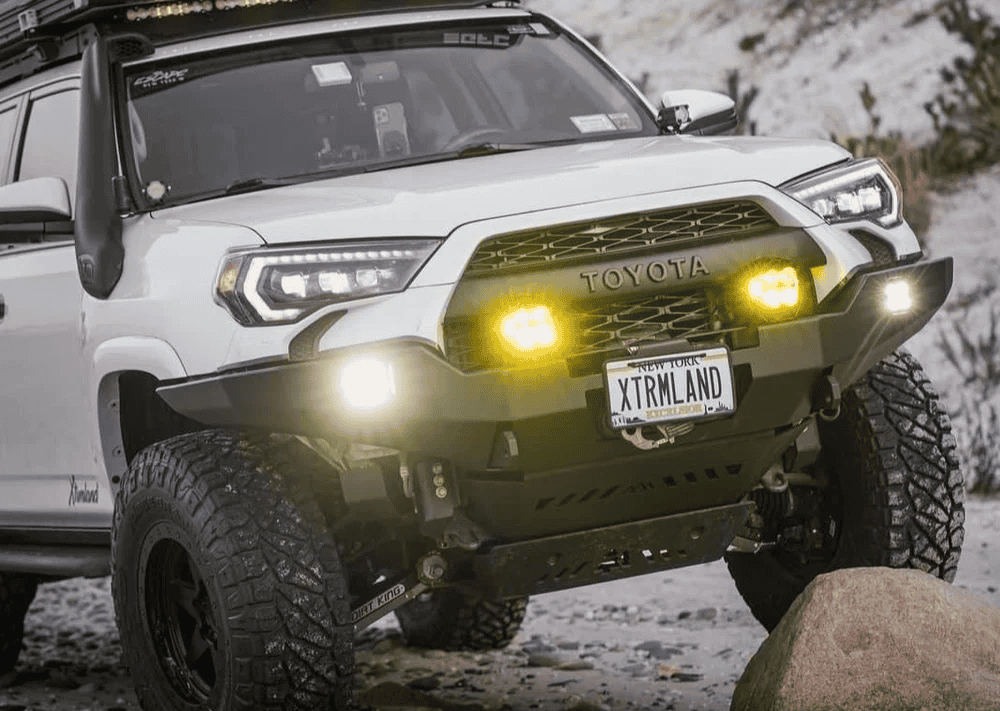Overland Vehicles

Overland travel is a long distance puzzle. You need a suspension that carries real weight, stays composed on washboard, and maintains control when the trail gets choppy. The best suspension for overland builds is not the tallest lift or the stiffest spring. It is the system that pairs correct spring rate with quality damping, preserves safe steering geometry, and resists heat fade over hours of corrugations.
Start with payload, not marketing numbers. Know curb weight, gear weight, water, fuel, armor, and passengers, then compare that total to gross vehicle weight rating and axle ratings. A constant load requires different spring choices than a variable weekend kit. The right rate keeps the vehicle riding near the middle of its travel, which protects shocks, bump stops, and steering.
Heat is the silent killer. Long stretches of dirt roads turn shocks into heaters. Larger bodies, remote reservoirs, and piston designs that move heat efficiently keep damping consistent after miles of chatter. Consistency equals control.
Even the best components struggle if weight is placed poorly. Keep heavy items low and between the axles. Front heavy builds need spring and damping tuned to maintain caster and prevent porpoising. Rear heavy builds need support without turning the ride into a buckboard. Corner balancing helps, but at minimum, measure fender heights with full trip gear and adjust rates to center travel.
Comfort matters when the highway is six hours to the trail. Control matters when that trail throws ruts and rocks at you. Balanced valving and spring selection let the chassis settle quickly without feeling harsh. Adjustable shocks can help, but only when baseline rates are correct. Avoid overly soft setups that bottom out and overly firm setups that skip across bumps.
Lift only as much as you need for tire clearance and travel. Extra height changes driveline angles, increases center of gravity, and alters steering geometry. Solid axle rigs often need caster correction and track bar alignment after a lift. Independent front suspensions may require upper control arms, tie rod angle corrections, and careful alignment to keep camber and caster in spec. Geometry that matches ride height keeps the wheel centered in the well and the steering truthful.
Shocks are the heart of control. Monotube designs move heat well and generally provide sharp response. Remote reservoirs add oil volume and surface area for heat management on prolonged dirt drives. Bypass style technologies allow different damping at different shaft speeds, which can calm chatter while controlling big hits. Whatever you choose, ensure the shock stroke works within your bump and droop limits to avoid topping or bottoming.
Springs carry the load and set ride height. Coil springs can be progressive or linear, each with tradeoffs in support and feel. Leaf springs add inherent load sharing and can be tuned with additional leaves or helper spring options. Air helper springs can support occasional heavy loads but should not mask under rated leaf packs. Match rates to a realistic constant load, not an empty garage weight.
Control arms, bushings, and joints control alignment under load. Quality joints reduce binding at travel limits and keep alignment from wandering. On solid axle trucks, track bar and drag link angles need to be aligned to avoid bump steer. On independent front suspensions, upper control arms can recover caster after lift and provide clearance for larger coilover bodies. Sway bars, and sometimes aftermarket versions, help stability in cross winds and reduce body roll with roof loads.
Paper numbers do not replace trail time. Load the rig for a real trip and test over pavement, graded roads, and a short technical section. Check for bottoming, topping, body roll, brake dive, and steering kick. Note shock temperatures after a long dirt segment. Adjust damping if you have that option, then re test. If you hit bump stops too often, you need more rate or more travel within safe limits.
Alignment should be checked after every major change and any hard hit. Caster keeps the wheel self centering, camber controls tire contact, and toe sets straight line stability. Tire pressure matters as much as valving. Overland tires often run lower pressures off pavement and moderate pressures on highway. Choose a pressure that avoids sidewall squirm while keeping the footprint planted.
Regular maintenance keeps small issues from becoming trail ending problems. Inspect bushings, joints, shock shafts, mounts, and coil seats. Listen for clunks and look for oil weep. Retorque hardware after the first few hundred miles of dirt. Fresh fluids and clean filters round out the reliability checklist.
When you are ready to translate this guidance into a real world build, proven installation and testing matter. Full system matching, geometry correction, and post install shakedowns ensure the paper plan becomes a confident drive. For inspiration and proven packages, see Explore our overland rigs. If you already have a platform and need a suspension centered upfit, review Custom overland upfit packages. Curious about team experience and process standards that protect your investment on the trail and the highway? Learn more at Why choose OZK Customs.
You bring your goals, travel style, and real trip weight. We map spring rates, shock sizing, and geometry corrections, install with care, and test on local terrain before handoff. Schedule a consult and drive away from Fayetteville Arkansas in a rig that feels planted, quiet, and ready for the miles ahead.
Ready to spec a suspension that matches your rig’s weight, terrain, and travel goals? Talk with OZK Customs. Our team designs and installs matched springs, dampers, and geometry corrections as part of full overland upfits. Schedule a consult to blueprint your setup and leave Fayetteville Arkansas with a dialed, road tested build.
ADDRESS:
6159 E Huntsville Rd, Fayetteville, AR 72701
PHONE:
(479) 326-9200
EMAIL:
info@ozkvans.com